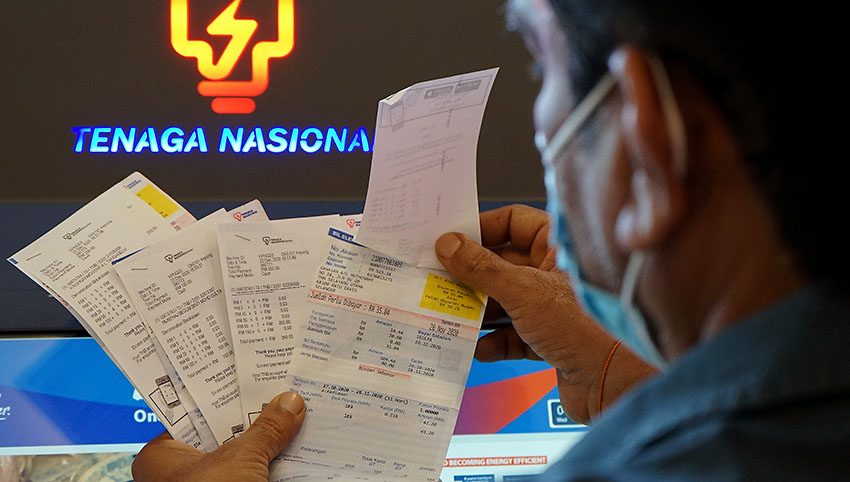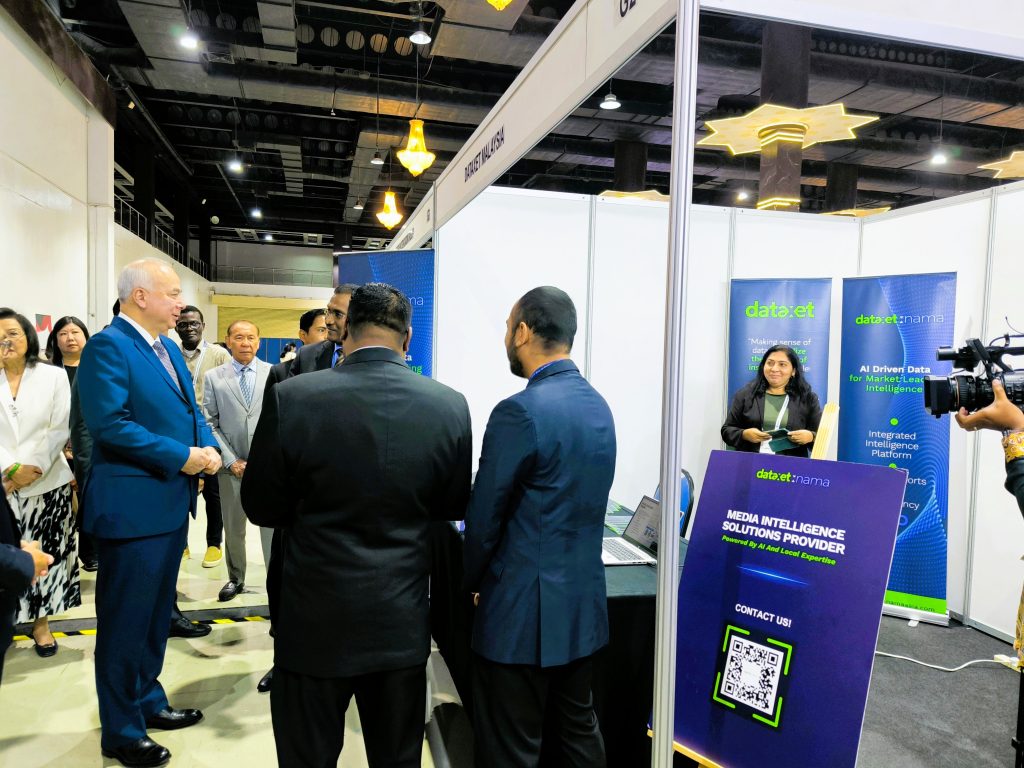The restructuring is also part of Malaysia’s broader energy transition efforts, aimed at facilitating decarbonization and supporting the shift towards renewable energy sources.
But the public response painted a different picture.
Between 1 and 23 June 2025, the announcement generated 1,075 mentions and over 72,000 engagements across social media platforms. What began as a technical policy update quickly evolved into a heated conversation driven by economic anxiety, political scrutiny, and widespread distrust in the official narrative. Many questioned which groups would be affected by the changes and called for clearer information about the new tariff structure.
From the rollout of the Malaysia electricity tariff adjustment to the egg subsidy cut reaction, our coverage reflects pressing economic issues. Visit our news section for more articles and insights.
 Timeline of Public Reactions
Timeline of Public Reactions
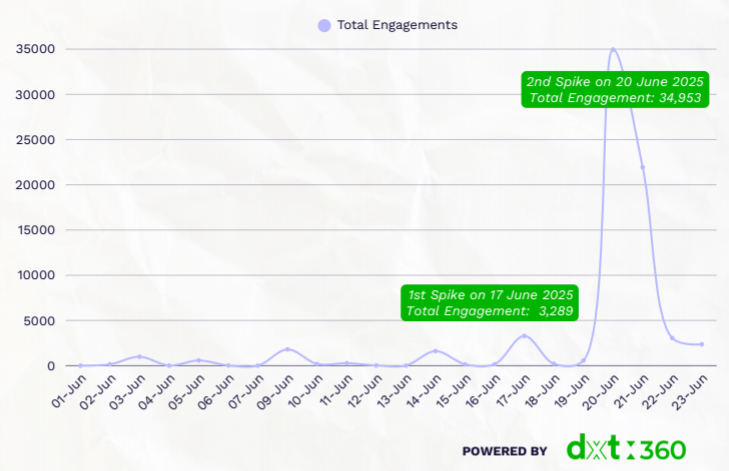
The tariff changes initially drew little attention. But a turning point came on 16 June when former Prime Minister Tan Sri Muhyiddin Yassin publicly urged the government to cancel both the SST expansion and electricity tariff hike. His statement reignited public concern, setting the stage for widespread digital debate.
16 June 2025
Former Prime Minister Tan Sri Muhyiddin Yassin called for the cancellation of both the electricity tariff hike and the SST expansion. His remarks heightened public awareness and concern, setting the stage for viral discussions.
17 June 2025 – First Engagement Spike (3,289 engagements)
Infographics, bill comparisons, and speculation circulated widely. Many users questioned whether the supposed savings were real or just political posturing. Confusion over technical jargon intensified.
20 June 2025 – Second and Largest Engagement Spike (34,953 engagements)
The Energy Commission formally announced the revised framework, promising up to 19% savings compared to the previous structure. Despite the clarification, scepticism persisted, with users shifting their focus towards governance, price pass-through risks, and class-based impacts.
Engagements gradually subsided after 21 June, as Malaysians awaited their July electricity bills to assess the actual effect.
 Where Did the Conversation Happen?
Where Did the Conversation Happen?
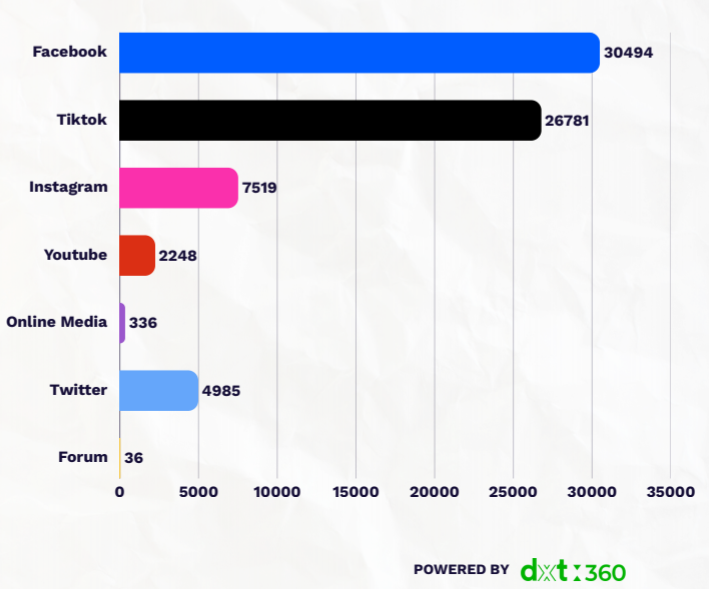
Facebook and TikTok led the conversation, collectively accounting for over 57,000 engagements. Twitter hosted political commentary, while Instagram and YouTube amplified bite-sized reactions and humour. Technical discussions unfolded in online forums, where users dissected the tariff formula in greater detail.
 What Drove the Conversation?
What Drove the Conversation?
The new electricity tariff sparked a surge of public discourse, revealing five core themes that captured the nation’s attention and reflected broader anxieties about affordability, fairness, and government transparency.
Electricity Tariff Changes & Public Confusion (50%)
The most dominant theme revolved around confusion and misunderstanding. Many Malaysians struggled to determine whether their electricity bills would increase or decrease under the new framework. Technical terms such as ICPT and AFA were unfamiliar to the average user, and the lack of clear, layman-friendly communication deepened the confusion. Some netizens admitted to having only read sensational headlines, which led to distorted interpretations and misinformed assumptions about the real impact of the changes. Social media became a battleground of opinions, with individuals debating the logic behind tiered user categories and how kilowatt-hour consumption translated to actual savings or increases. Social media became a battleground of opinions, with individuals debating the logic behind tiered user categories and how kilowatt-hour (kWh) consumption translated to actual savings or increases. The absence of practical examples or transparent case studies further fuelled public anxiety.
Impact on Cost of Living & Goods Prices (20%)
Although the government maintained that 85% of domestic users would enjoy lower electricity costs, a significant portion of the population remained unconvinced. Netizens expressed concern that higher industrial and commercial rates would have a cascading effect on the prices of goods and services. Business owners, facing increased operating costs, were expected to pass on these costs to consumers. The public feared that electricity savings at the household level would be negated by rising prices of essentials such as food, transport, and manufactured goods. While the government assured that most domestic users would benefit, some groups are affected by targeted rebate mechanisms designed to offset higher costs for vulnerable sectors. These concerns intensified when linked with other concurrent policy changes, such as the SST expansion and fuel subsidy reforms, creating a larger narrative around inflation and affordability.
Political Criticism (15%)
The new tariff structure also reignited political debate. Some users praised the restructuring as a necessary reform aligned with sustainability goals, but many others criticised its rollout as poorly timed and poorly communicated. The Madani government faced criticism for failing to prepare the public with sufficient education and explanation. Comparisons to previous administrations became common, with some arguing that earlier governments handled utility policies more transparently. The perceived disconnect between government optimism and public struggle only widened the gap, as users accused officials of failing to understand on-the-ground realities. Hashtags and satirical memes further amplified this critical sentiment.
Support for Efficiency (10%)
While criticism dominated the narrative, there remained a minority who viewed the restructuring in a positive light. These individuals believed the new system promoted energy efficiency, fairness, and a long-overdue move away from blanket subsidies. Supporters praised the principle of paying based on actual consumption, arguing that it encouraged responsible energy use and reduced wastage. Many also supported the introduction of targeted subsidies for vulnerable groups, seeing it as a more sustainable model for the long term. Short, affirmative reactions such as “terbaik,” “mantap,” and “finally” captured this cautious optimism.
Calls for Price Monitoring (5%)
A smaller but vocal group called for stronger oversight and enforcement to prevent abuse of the new structure. These users feared that businesses might use the tariff change as an excuse to increase prices arbitrarily. There were widespread calls for the Ministry of Domestic Trade and Cost of Living (KPDN) to monitor market responses closely and to penalise unjustified price hikes. Suggestions were also made for the publication of comparative billing data and for more transparent reporting from energy providers to assure the public that the system would not be exploited. Accurate and up-to-date information about tariff rates and restructuring processes was highlighted as essential for maintaining public trust and transparency.
 Word Cloud Analysis:
Word Cloud Analysis:
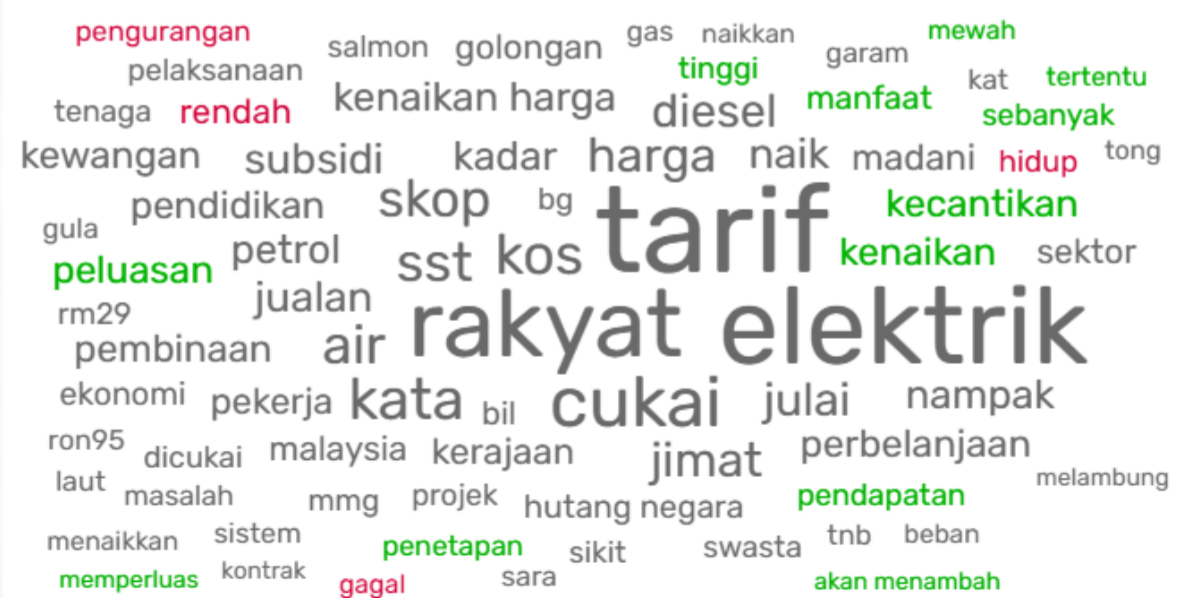
The word cloud revealed not only popular keywords but also the layered frustrations, fears, and expectations Malaysians held in response to the electricity tariff overhaul. These themes painted a picture of uncertainty, inequality, and institutional distrust.
1. Confusion Over Tariff Structure and Real-World Impact
Keywords like “tarif,” “bil,” “harga,” “turun,” “naik,” “pengurangan,” and “rendah” consistently appeared in user discussions. Although the government assured the public that the majority would benefit, many remained doubtful. Netizens debated whether savings would be meaningful or marginal with some pointing out that reductions of only RM5–RM10 would be easily offset by broader price hikes elsewhere. The mention of “air” and “aircond” reflected seasonal anxieties, particularly with rising temperatures increasing energy usage. Meanwhile, confusion around how usage tiers applied to different household types such as multigenerational homes versus single occupants remained unresolved in the public’s view.
2. Cost of Living and Inflation Spillover from SST and Fuel Policies
The presence of keywords such as “barang,” “kos,” “kenaikan,” “diesel,” “petrol,” “ron95,” “subsidi,” “sst,” “cukai,” “gula,” and “garam” revealed an undercurrent of economic anxiety. Netizens viewed the tariff revision not in isolation, but as part of a string of economic policies that cumulatively burdened the rakyat. There were concerns that businesses might cite higher operational costs to increase food prices and transportation fares, thus impacting every stage of the supply chain. In this context, the promise of slightly lower electricity bills seemed inadequate in relieving the broader financial strain.
3. Frustration Over Inequality, Class Divide & Sectoral Burden
Keywords such as “golongan,” “pendapatan,” “ekonomi,” “beban,” “hutang,” “perbelanjaan,” “pendidikan,” “kontrak,” and “pembinaan” spoke to wider concerns over inequality and systemic stress. Lower- and middle-income households expressed fears that they were being asked to absorb the brunt of restructuring policies. There was also concern that industries essential to national development, such as education and construction, would face operational difficulties due to rising electricity costs. The demand from these customers for fairer electricity pricing and policy changes is a significant factor influencing ongoing regulatory adjustments. The word “mewah” surfaced in discussions around fairness , many users believed that focusing tax efforts only on luxury goods failed to address deeper economic disparities.
4. Criticism of Tenaga Nasional and the Energy Ecosystem
Mentions of “Tenaga” and “TNB” captured public discontent with the monopoly nature of Malaysia’s energy provider. Users questioned how an entity with strong profits could support a tariff hike, with some suggesting that profits should have been used to buffer the rakyat instead. The conversation expanded into critiques about energy infrastructure, preparedness for electric vehicle adoption, and the broader energy ecosystem. Many felt the pricing model lacked inclusivity and penalised the wrong segments of society.
5. Distrust in Governance and Frustration with Communication
Government-related keywords like “kerajaan,” “madani,” “PMX,” and “gagal” reflected a growing scepticism towards state leadership. The sentiment was not limited to the tariff itself, but extended to how the issue was explained and executed. The administration was perceived by many to have failed in delivering a cohesive narrative. The promised fairness and inclusivity under the “Madani” vision were viewed as rhetorical rather than actionable. Many users called for more transparent frameworks, proactive engagement with citizens, and policy implementation that aligned more closely with real-world struggles.
 Sentiment Breakdown
Sentiment Breakdown
 Negative (65%)
Negative (65%)
Most users expressed dissatisfaction, confusion, or concern. Rising living costs, poor communication, and distrust in government intentions formed the core of negative sentiment.
 Neutral (10%)
Neutral (10%)
These comments focused on clarification, technical queries, and observation. Many reserved judgement until after implementation.
 Positive (25%)
Positive (25%)
A smaller group expressed support, viewing the change as a step towards energy reform. They welcomed the tiered approach and benefits for lower-usage households and praised the government’s attempt to modernise billing.
 What Netizens Were Saying
What Netizens Were Saying
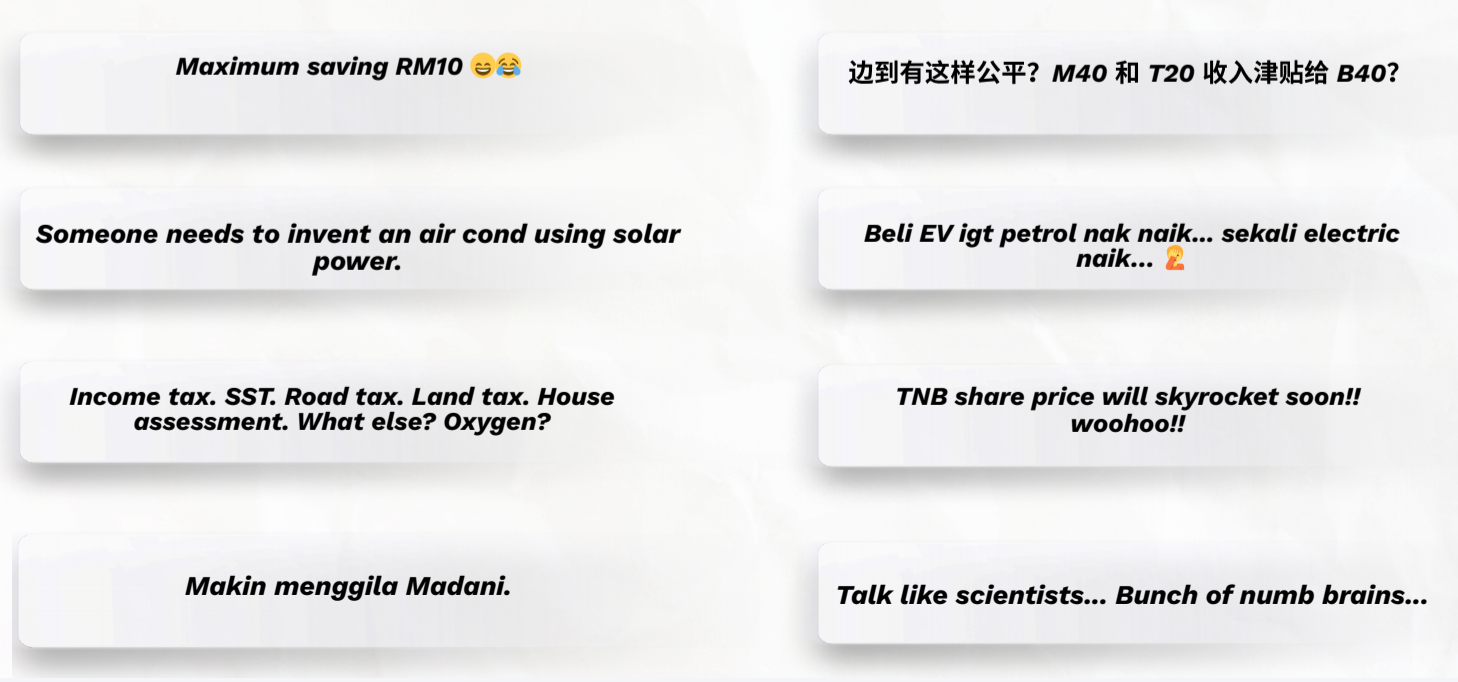
These comments reflected a blend of satire, sarcasm, and genuine concern. For many, the policy symbolised the widening gap between economic realities and official optimism.
 Final Thought
Final Thought
What began as a tariff reform turned into a conversation about transparency, fairness, and the rakyat’s financial future. Malaysians did not merely react to the price of electricity—they responded to what the restructuring represented: rising living costs, institutional opacity, and an uncertain economic path.
As the government pushed forward with energy reform, it faced growing demands for clear communication, robust enforcement, and citizen-centred implementation.
At Dataxet Malaysia, we help organisations hear beyond the noise. Through DXT360, we turn public sentiment into actionable insight—so decision-makers can act not just faster, but smarter.




